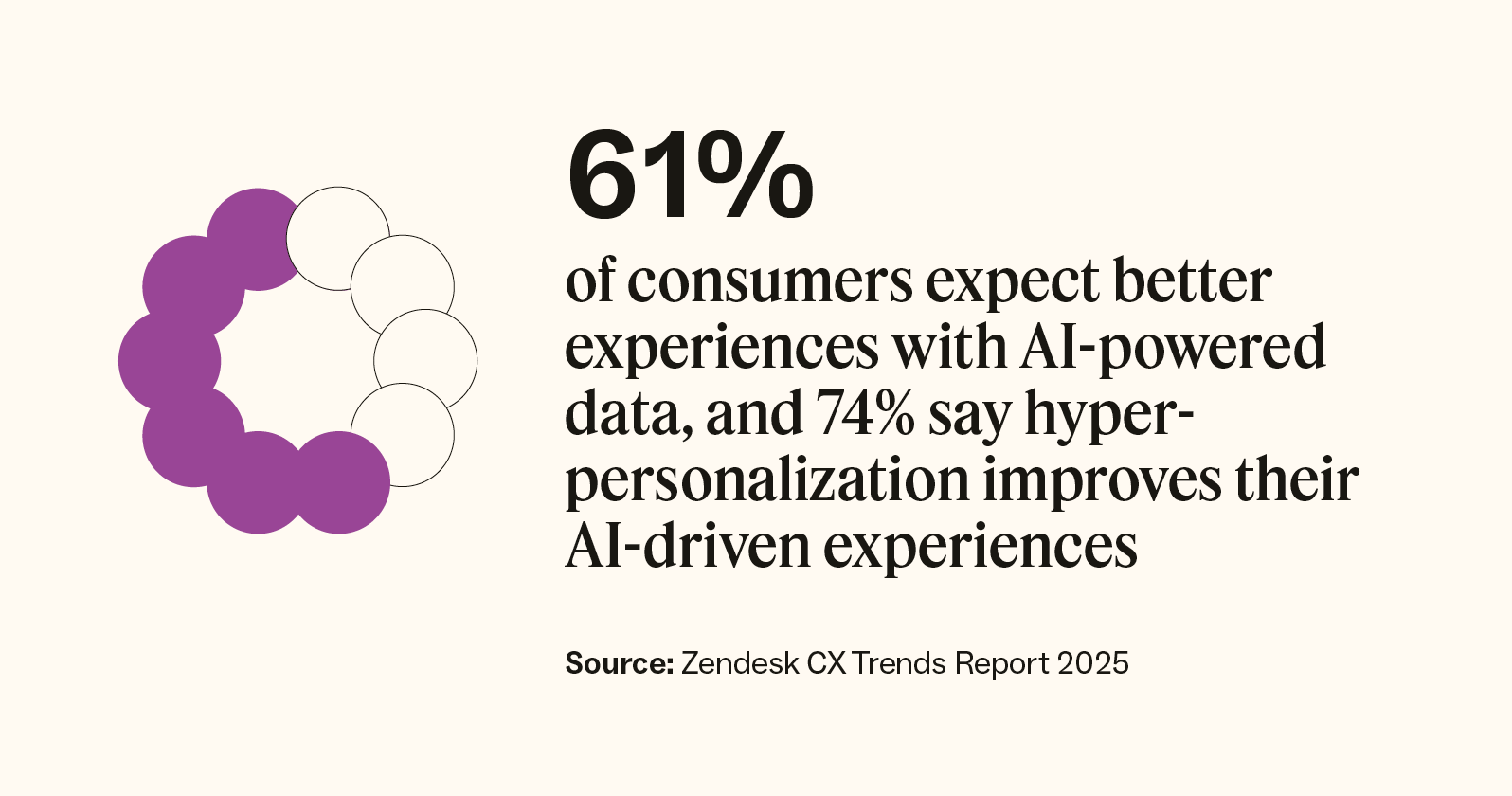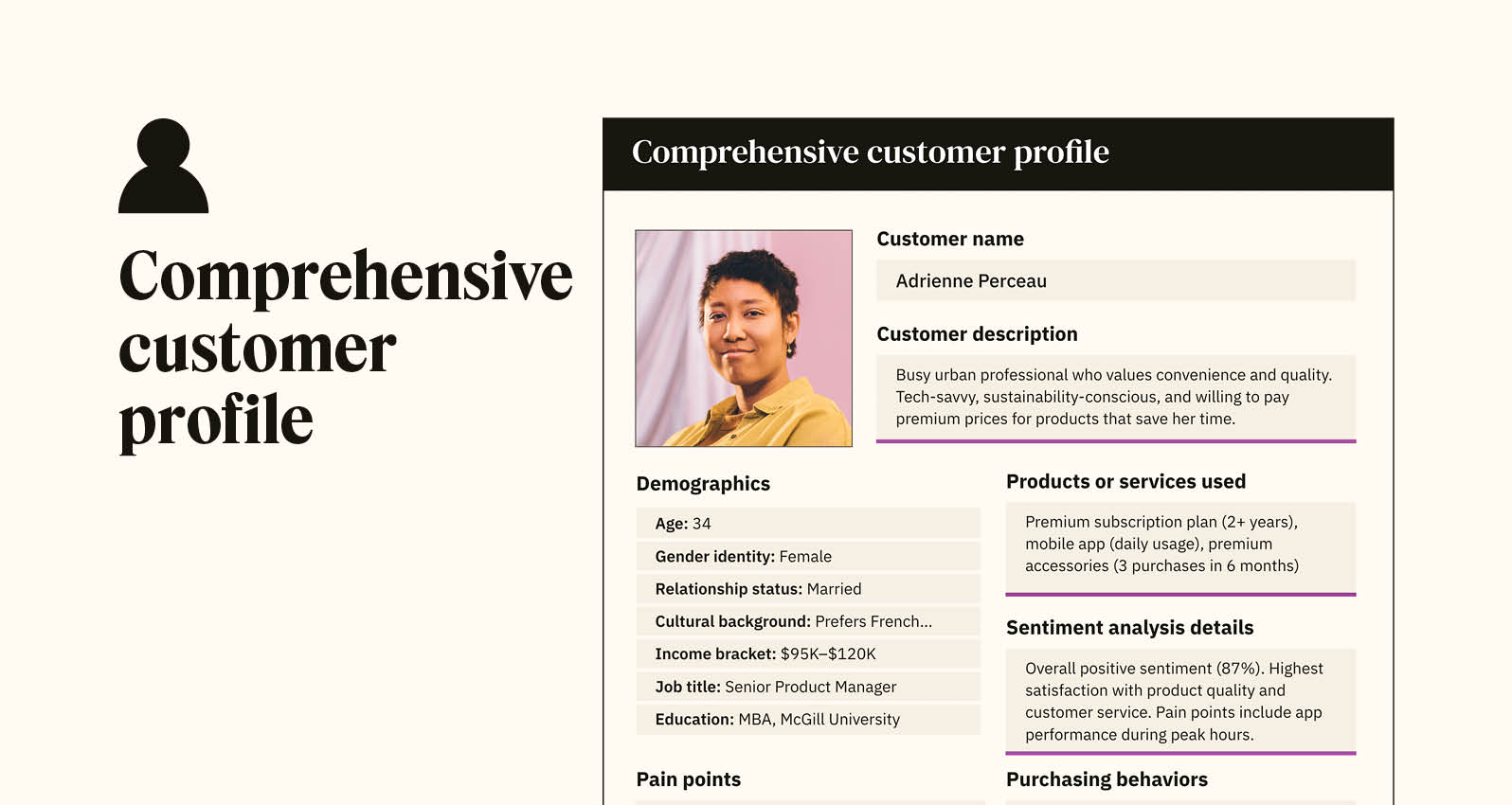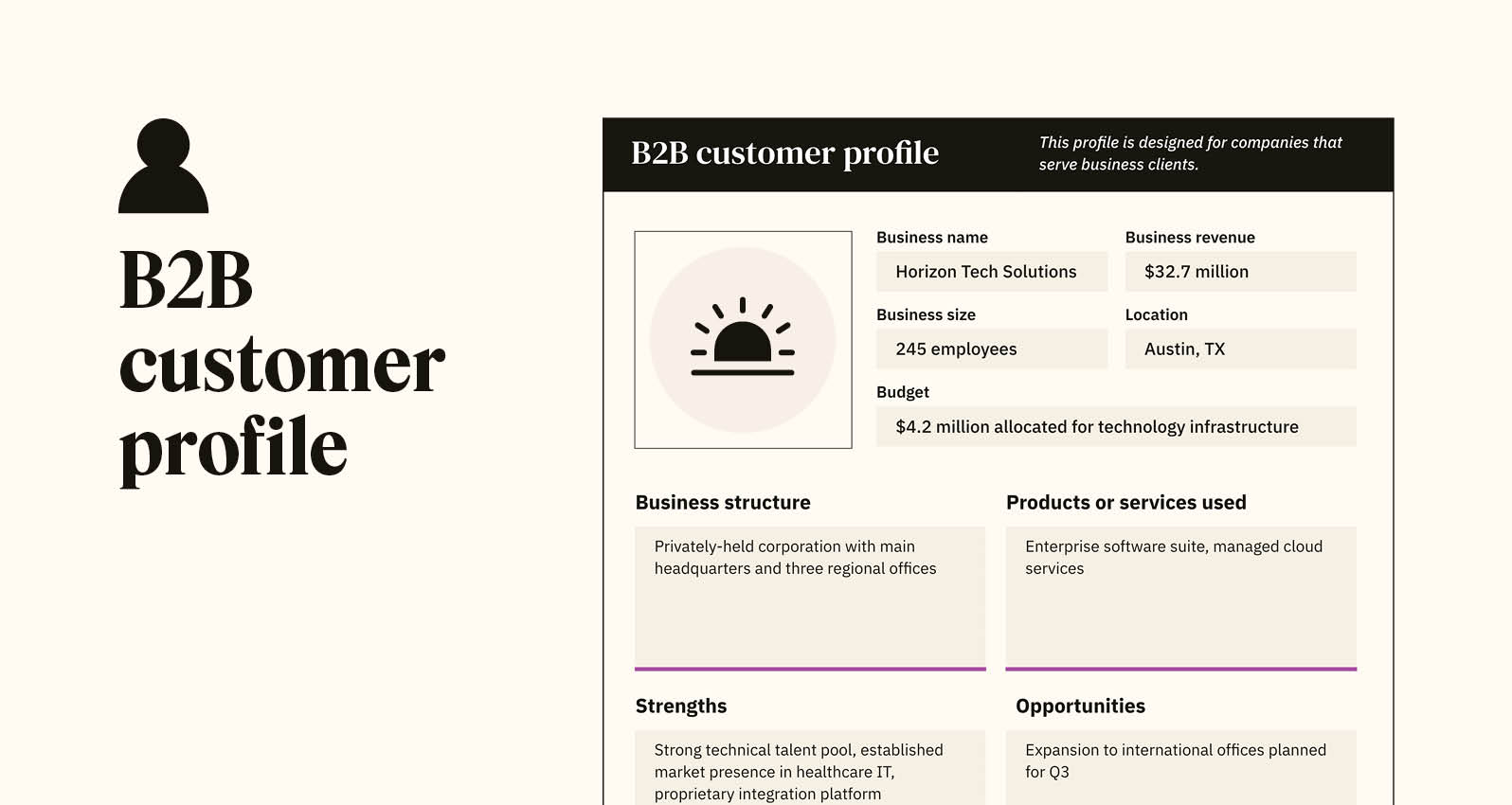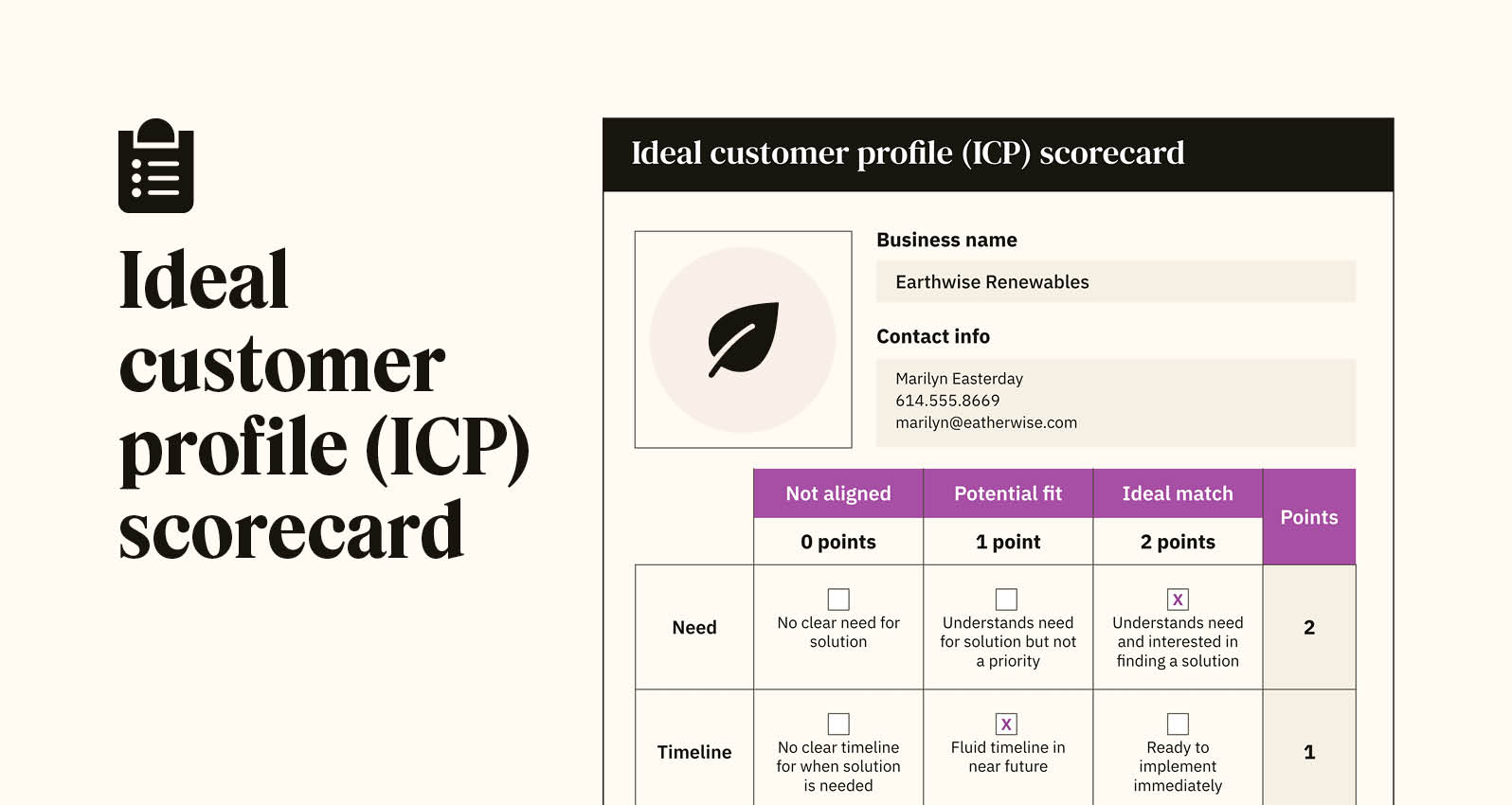Article • 15 min read
What is a customer profile? Guide, examples and templates
Leverage data to build rich customer profiles so you can provide more relevant, personalised experiences, and download our free customer profile templates.
David Galic
Contributing Writer
Last updated July 9, 2025
The Zendesk Customer Experience Trends Report 2025 shows that 61% of consumers want businesses to use the data they collect about them to personalise their experience with AI.
This data is key to building brand loyalty. How can you use data to give your customers that extra push of customisation that takes their experience from good to great? By creating a data-rich customer profile of your target audience.
Follow our guide on how to create a data-rich customer profile of your target audience so you can start providing hyper-personalised experiences for your customers to boost both loyalty and retention.
More in this guide:
- What is a customer profile?
- Benefits of customer profiling
- Types of customer profiling
- How to create a customer profile in 5 steps
- Customer profile templates + examples
- 9 tools you can use to collect customer profile data
- How often should I update customer profiles?
- Frequently asked questions
- Use your customer profile data to create people-centric experiences
What is a customer profile?
A customer profile is a document that contains key information about your ideal customer. You can use it as a strategy guide to creating personalised experiences.
Each profile should contain customer details like:
- Pain points
Interests
Buying patterns
Demographic data
Motivations
Interaction history
These details can help your business understand how consumers engage with your brand and products, so you can customise marketing campaigns, tailor messaging and conversations and provide personalised support.
Remember to be transparent with customers about what data you collect as well as how you plan to use and store it. Always allow your customers to decide whether or not they want to share their information.
B2B vs B2C customer profiles
There are two types of business customer profiles: business-to-business (B2B) and business-to-consumer (B2C). The data you collect for client profiles will vary depending on whether you’re a B2B or B2C company.
- B2B customer profiles map the typical business that buys your goods or services, including the company’s size, industry, location, revenue and target audience. The profile may also include decision makers at the company.
- B2C customer profiles focus on individual customers and feature demographic data like age, gender and lifestyle preferences.
Regardless of the difference in their data collection goals, both B2B and B2C companies need to prioritise updated customer profiles for the highest quality customer service.
Benefits of customer profiling

With customer profiling, you’ll have the data you need to create the tailored experiences consumers want. The data allows you to see the customer’s motivations and deterrents behind their purchases and provides insights into what customers value most when interacting with brands. Here are some benefits your business can expect from customer profiling.
Improve efficiency by reducing silos
Siloed data often blocks progress toward deeper personalisation. A system that unifies data from across departments allows teams to quickly and efficiently find the customer data they need.
With a single customer view, agents can access all necessary context at once. This eliminates the need to switch between systems while creating personalised experiences.
Drive loyalty with personalised and proactive experiences
Offering proactive and personalised experiences is essential to building trust and fostering customer loyalty. One way to do that is with AI—whether over text or voice, AI can deliver human-centric experiences in natural language.
Our CX Trends Report 2025 reveals that 74% of consumers said this hyper-personalisation improves their experience when they work with tools like AI agents. These intelligent bots can analyse customer intent, sentiment, and language to provide targeted support. When customers feel like a brand understands them, they’re more likely to stick around. Leverage relevant data to engage with your customers and form a deeper connection with them.
Increase cross-team collabouration
Every team within your business has valuable insights that can enhance your customer profiles. Increasing cross-team collaboration enables you to create targeted marketing campaigns and deliver personalised support for great customer experiences.
A system like the Zendesk Agent Workspace helps improve collaboration across teams by consolidating real-time information into a single view that each department can see.
Boost sales
Customer profiling shows you which groups to target. This helps your sales team identify high-quality leads and customise their approach. As a result, they may close more deals.
Say a customer profile reveals there’s interest in a product feature that your company now offers. You can customise your messaging when reaching out to the customer and start the process of closing a sale.
Gather insights to make data-informed decisions
Relevant data is often scattered across systems. Consolidating this information with a customer data platform (CDP) provides valuable insights for more informed decision-making. Marketing teams may have crucial information that could help close a sale, while customer support may have key data for a more personalised marketing campaign.
Types of customer profiling
The customer profile you want to create helps determine the types of data you need to collect. Here are some common methods of customer segmentation to create the best customer profile possible.
Customer profile type | Purpose | Characteristics |
Demographic | Demographic profiling defines your customers by who they are. Marketing and support teams often use this information to create personalised messaging and to identify communication channel preferences. |
|
Psychographic | Psychographic profiling defines why customers buy your products or services. This information is difficult to identify, but it helps your business understand the thoughts and motivations behind purchases and how customers feel about your brand (also known as customer perception). |
|
Behavioural | Behavioural profiling defines how your customers interact with your brand. Businesses can use behavioural data to identify upsell and cross-sell opportunities, improve the overall customer experience (CX) and make personalised recommendations. |
|
Geographic | Geographic profiling defines your customers by their physical location and where they shop. Geographic data factors – like climate, cultural influences, delivery options and rural versus urban environmental needs and preferences – impact customer influences and shopping habits. |
|
How to create a customer profile in 5 steps
The most successful profiles contain more than just basic details – they should include a wide range of data that showcases how your target audience interacts with your brand. To build a data-rich customer profile, you need customer database tools to track customer information. Here’s how to create a customer profile in five steps.
- Use consumer profile templates: Creating a customer profile on your own can be time-consuming. Rather than starting from scratch, use prebuilt customer profile templates to plug in your customer data and build a profile quickly and easily.
- Identify customer pain points and solutions: The next step is to identify the most common customer pain points and how your product or service solves them. Many customers may share similar pain points and customer profiles can help you find the connective tissue.
- Determine common demographics and behaviour: Customer profiling data can help you find similarities between certain customer groups, like characteristics, locations and motivations. This enables you to target customers better and personalise outreach, marketing and customer service communications.
- Gather and analyse customer feedback: Gathering and analysing feedback can help you visualise your ideal customer across different customer groups. Collect feedback from customer satisfaction surveys (CSAT, Net Promoter Score®, etc.), social listening, community forums, and more.
- Find the right Software to integrate data across tools and systems: Once you capture this quantitative and qualitative customer profile data, you can track and analyse it with a customer relationship management (CRM) system.
The right CRM software will help you collect data from your current customers – like name, location, history and information from the entire customer journey – to create the most accurate profiles.
Customer profile templates + examples
Our customer profile templates make it easy to get started. With your free download, you get five fill-in-the-blank PDFs:
- Basic customer profile template
- Comprehensive customer profile template
- B2B customer profile template
- B2C customer profile template
- Ideal customer profile (ICP) scorecard template
- Zendesk Agent Workspace customer profile example
Basic customer profile template

this easily scannable template provides – you guessed it – all the basic information you need at a glance. The basic customer profile includes demographics, the products or services used, pain points and solutions.
Comprehensive customer profile template

this template allows you to dive deep into customer details, with plenty of blank space to add relevant customer data.
B2B customer profile template

this customer profile template gives you space to add the important details for your ideal B2B customers, including business size, revenue, structure, strengths, weaknesses, location, budget, pain points and solutions.
B2C customer profile template

this template has everything you need to create a profile for B2C customers, including their professional overview, the products they use, the benefits and challenges of product use, pain points and a customer summary.
Ideal customer profile (ICP) scorecard template

The ICP scorecard template allows you to use a scoring system to assess the potential fit of a customer. It includes categories for need, timeline, budget and decision-making power.
Scores range from 0 to 2 based on how well they fit the assigned criteria. If a customer’s score exceeds your threshold, chances are they’re an ideal customer.
Zendesk Agent Workspace customer profile example

The Zendesk Agent Workspace customer profile shows you what a customer profile looks like when pulling customer data into a single unified view. This marketing profile example lets you see contact information, activity history, ticket information, additional customer details and a full conversation history.
Free customer profile templates
Get to know your ideal customer base better with our free customer profile templates.
9 tools you can use to collect customer profile data
Consumers give companies their data in dozens of ways every day. Every interaction on your website, social media, and other customer touchpointsallows you to capture customer details but that information is only useful if you have access to it – ideally all in one place.
Here are a few tools to help you collect customer data to better understand your buyers and build long-term customer loyalty.
- Lead capture forms: Embed a sign-up form into your website and ask site visitors to fill it out with their contact information. In exchange, they’ll get access to something, like a special discount code or white paper. You’ll learn which products or subjects each visitor is interested in while gathering basic information about them.
- Surveys: Send surveys to customers who have used your product or service (and/or interacted with your support team) to understand what they like and dislike about your offerings. You can use that valuable customer feedback to make improvements and build stronger customer relationships.
- Email marketing: Capture data from your customer email interactions to inform your targeted marketing profiling. For example, if a client clicks on an email about a specific product they haven’t purchased yet, it might be a sign that it’s time for an upsell. Email marketing platforms can also integrate with your CRM software to give you an overall picture of a customer’s engagement level with your brand.
- Social media: Are your customers following your social media channels? If not, think about how to attract their attention. Have they liked a lot of your Facebook posts or shared them with their friends? Do they regularly respond to your business’s tweets? If so, you know they’re loyal customers. All this information can be merged into a CRM for your marketing team to use.
- Customer support channels: An omnichannel experience allows you to deliver streamlined support and meet customers where they are. You can start a conversation on one channel and resume it at a later time – on a different channel – without losing context. This provides a flexible, customer-centric communication method that records data and conversation history.
- Google Analytics: This tool provides deep insights into customer interactions on your website, so you can identify what’s working and what’s not. You can see the most popular pages, learn about your audience’s interests and understand how visitors engage with your site.
- Customer accounts: A customer’s registered account on your website or company platform contains basic information (such as name, email or preferred method of communication). If a customer logs in to their account while browsing your website, you’ll see how they interact with each of your products.
- E-commerce and billing platforms: Tools like Shopify collect information about how a customer makes purchase decisions. They also record key data like what your customer purchased, how much money they spent and how frequently they place orders.
- Customer service software: Open, flexible customer service software allows you to integrate all your data from different sources into your CRM, giving you a complete picture of the customer. When you have the information you need in one place, you’ll better understand how to build great customer experiences.
Even if you use these types of tools, you don’t necessarily need to integrate every data point into a CRM at once. You can choose what to include based on your company’s objectives. Regardless of what information you obtain, centralising your data will help your team provide a consistent customer experience.
How often should I update customer profiles?
At a minimum, customer service companies should conduct quarterly reviews of their customer profiles to ensure the information remains accurate and relevant.
Customer profiles should be treated as living documents that evolve alongside your customers' changing needs and behaviours. Scheduling maintenance helps prevent decision-making based on outdated information and helps you to capture emerging trends in customer preferences and pain points.
Tip: Leverage AI-powered customer service software to help you keep customer profiles updated in real time with crucial consumer insights. AI crawls 100 percent of customer interactions and adds valuable notes like customer sentiment, how customers feel about the service you provide. |
Frequently asked questions
Use your customer profile data to create people-centric experiences
Building data-rich profiles will help you improve your marketing, sales and support by anticipating what customers need. When you have all that data, you can start strategising how to approach things next.
A comprehensive profile helps you know who your customers are and what they want before they’ve even asked a question. Your customers will likely be more loyal to your brand because they know you can solve their problems. These positive experiences should lead to reduced customer churn.
